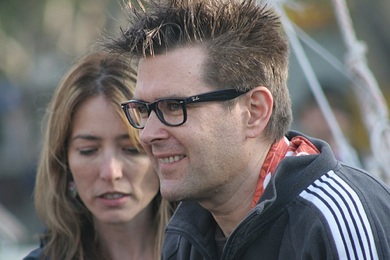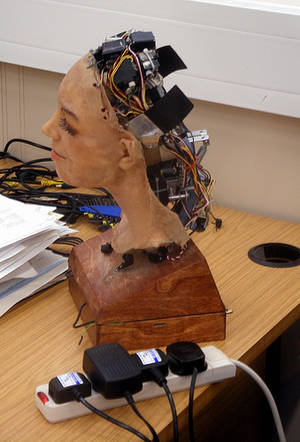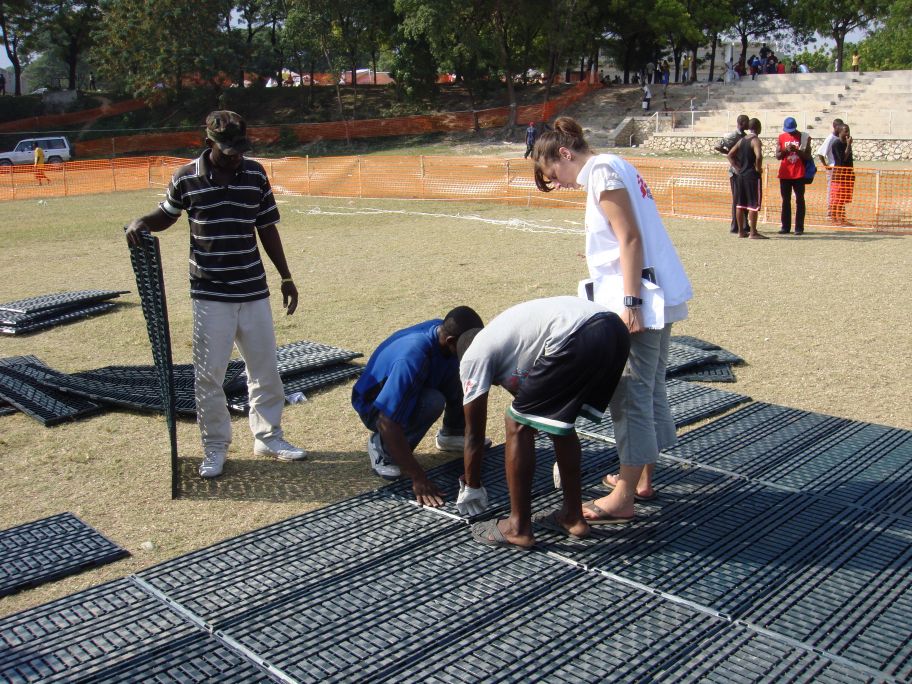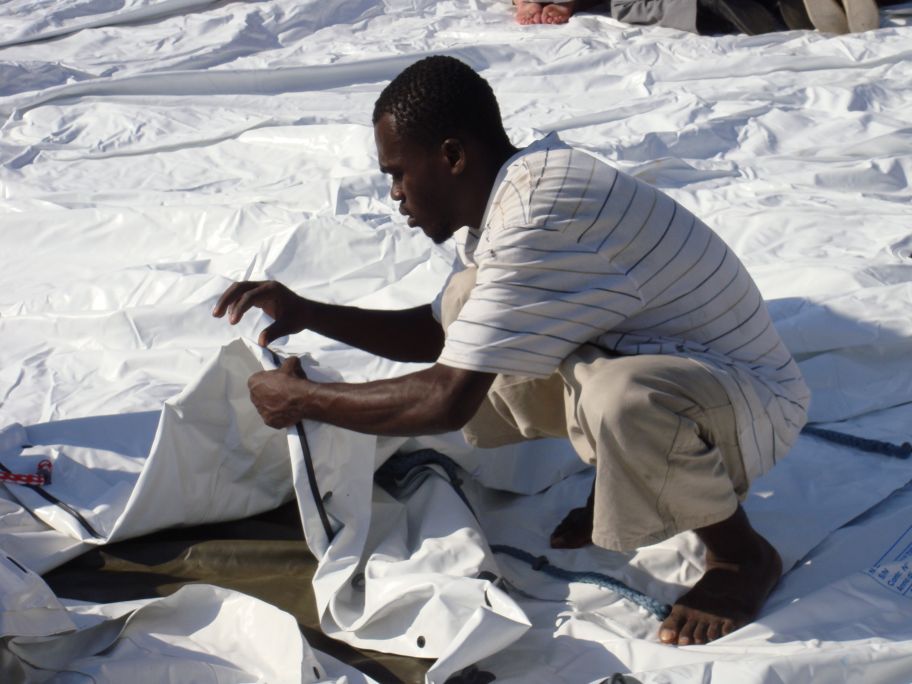The Latest from Boing Boing |  |
- Harrogate, England: Dickens was right to call it weird!
- Critical Commons vs. Hitler: resource for free/open media and fair use
- Stark terror of stale batteries, 1936
- Measuring font ink-use by hand-drawing sample text with ball-point pens
- Peanuts as Peanuts t-shirt proposal on Threadless
- Constitutional amendment petition: run government for people, not monied interests
- Awkward Stock Photos
- Hitler's Favorite Painter (and one of mine too)
- Coconut heads on pegboard, Florida, 1960
- One More Demented Gift Idea: Framed Photos of the REAL Psycho House
- Why the "Norway spiral" has the Russian government spooked
- If alien life exists, we have probably weirded it out by now
- Radium water actually even less healthy than you already thought
- Hair ice
- Kabbalah tool for iPhone
- DRM-free Kindle books: are they any free-er?
- Damned funny law-firm ad
- TSA plants baggie of white powder in traveller's bag
- Lessig on giving corporations unlimited right to bribe politicians
- Does the Uncanny Valley exist?
- Ridiculous gut-busting food-ads lampooned
- Story Time: Jerry- The World's Most Human Chimp
- Haiti: Inflatable Hospital photo gallery
- Haiti: HOWTO set up a plug-and-play hospital - Doctors Without Borders
- What's Microsoft doing for Indie Games?
- Adjustable smartphone car mount Instructable
- Interview with bOING bOING's founders
- Flying R2D2 needs a physics lesson
- White American basketball league
- Ten years of Boing Boing
| Harrogate, England: Dickens was right to call it weird! Posted: 22 Jan 2010 03:44 AM PST  MS sez, "Charles Dickens said that my home town of Harrogate was weird ("The queerest place with the strangest people in it leading the oddest lives...")! I set up this blog using rediscovered 'photos' that seem to prove his point." Very nice work indeed, MS. WEIRD HARROGATE (Thanks, MS!) Previously: |
| Critical Commons vs. Hitler: resource for free/open media and fair use Posted: 22 Jan 2010 02:18 AM PST Critical Commons has created its own entry in the great Hitler in the bunker remix meme. Steve Anderson sez, "The video is also promoting the fair use advocacy site Critical Commons, which is a fair use advocacy and media sharing site, funded by the MacArthur Foundation. This is currently the most radical media-sharing site on the open internet. Designed for media educators and students, Critical Commons makes high-quality, copyrighted media publicly available by placing it in a critical context and informing users about their rights under fair use." Previously: |
| Stark terror of stale batteries, 1936 Posted: 21 Jan 2010 10:11 PM PST  They musta scared easy in 1936, judging from this ad for Eveready batteries headed "Stark Terror Was Squeezing at My Heart." |
| Measuring font ink-use by hand-drawing sample text with ball-point pens Posted: 21 Jan 2010 09:56 PM PST  Clever work by Matt Robinson and Tom Wrigglesworth: they drew the same piece of sample text in several fonts at large scale using transparent Bic pens, then measured the remaining ink in the barrels to show the comparative consumption used by each face. Yes, you could probably write some code that calculated the area used by the faces described in their PostScript files, but where would the fun be in that? Clever work by Matt Robinson and Tom Wrigglesworth: they drew the same piece of sample text in several fonts at large scale using transparent Bic pens, then measured the remaining ink in the barrels to show the comparative consumption used by each face. Yes, you could probably write some code that calculated the area used by the faces described in their PostScript files, but where would the fun be in that? Measuring Type (via Kottke) |
| Peanuts as Peanuts t-shirt proposal on Threadless Posted: 21 Jan 2010 09:51 PM PST  Murraymullet's Threadless submission features literal Peanuts -- unshelled peanuts painted to resemble Charles M Shulz's creations. Nice! Previously:
|
| Constitutional amendment petition: run government for people, not monied interests Posted: 21 Jan 2010 09:46 PM PST The Campaign to Legalize Democracy is circulating a petition in response to yesterday's ruling that legalized unlimited political bribery by corporations in the USA. Signatories include Bill Moyer, Howard Zinn, Jim Hightower, Billl McKibben, and Tom Hayden. "We the corporations" (Thanks, Rodney!) |
| Posted: 21 Jan 2010 08:36 PM PST |
| Hitler's Favorite Painter (and one of mine too) Posted: 21 Jan 2010 08:36 PM PST  Arnold Bocklin was a 19th century symbolist painter whose work influenced and inspired Salvador Dali, Sergi Rachmaninoff, Marcel Duchamp and H. R. Giger. Adolph Hitler owned eleven of his paintings and cited Bocklin as his favorite painter. Click through the jump for a gallery of weird and wonderful art by this little known, but profoundly influential artist... The following images come from this great Japanese site devoted to Bocklin's work. (Too bad I don't speak Japanese!)
|
| Coconut heads on pegboard, Florida, 1960 Posted: 21 Jan 2010 05:36 PM PST  Charles Phoenix writes: This is not an art installation in a snooty, big city gallery or museum. (Although it could be and should be.) This is the perky polka dotted wall of a sunshine state souvenir stand dressed with dozens kooky characters. They are to coconuts what tiki gods are to palm tree trunks. Each is hanging there just waiting to be bought, bagged and taken to a new, more permanent home like a patio, tiki bar or rumpus room. Each one has been carefully carved, painted and finished by hand then imported from the exotic island it came from for our pleasure.Coconut heads on pegboard, Florida, 1960 |
| One More Demented Gift Idea: Framed Photos of the REAL Psycho House Posted: 21 Jan 2010 05:13 PM PST  If anyone wants to know what I want for my birthday, it's a jumbo sized framed photo of this incredibly creepy photograph from the Life magazine archives. This is the bedroom of Ed Gein, the psychotic murder who was the inspiration for Alfred Hitchcock's "Psycho" and Tobe Hooper's "Texas Chainsaw Massacre". They say you can tell a lot about a person by looking at their home... If that is true, this picture tells me things I don't want to know! If you aren't squeamish, click through the jump to see more totally disturbing photos of the REAL Psycho house...
The photographer for Life magazine showed up at Ed's house just as the police were packing up and leaving. Curious neighbors swooped in on the house and started peeking in the windows and checking the locks on the doors. The photographer entered the house with them and shot these uncomfortably revealing pictures, which were published in Life magazine in 1957. In March of 1958, the house burned to the ground under mysterious circumstances. The rumor was that the locals didn't want the house to become some sort of serial killer theme park. Many speculated that the police hadn't really done a thorough job of checking out all the nooks and crannies in the house. No doubt, the fire ensured that many of Ed's secrets would remain secrets forever. Inside, the house was in a state of total squalor... with the exception of one room. The living room was orderly and neat- exactly as Ed Gein's mother had left it when she passed away a decade earlier, leaving Ed all alone in the world. The kitchen held many of the worst horrors. Organs were in glass jars in the refrigerator. The shop owner's heart had been cooked in a pot on the stove. A bowl made from the top part of a human skull stood on the kitchen table. For years after these chilling photos appeared in Life, midwestern children would scare each other by whispering about the strange man that lived all by himself in the woods that was going to come to town and "Gein ya!" Now, thanks to the Life magazine archives, you can hang these historic photos in your own home, custom printed and framed to fit any decor... Well, almost any decor... Just click through the image you like and click on the "BUY PHOTO" button. Go on! I double dare ya! |
| Why the "Norway spiral" has the Russian government spooked Posted: 21 Jan 2010 04:36 PM PST James Oberg at IEEE Spectrum has been following the "disaster-ridden" Russian missile program that lead to last month's spectacular spiral lights display over Norway. He offers some insight into the fascinating political story going on behind the scenes.
IEEE Spectrum: Russia's Ailing ICBM Program UPDATE: A commenter asked for information explaining how an ICBM could produce the phenomena seen in the video. The Christian Science Monitor interviewed a rocket scientist about this back in December. Their explanation includes a helpful video. New Scientist also had a similar, but not quite as thorough, interview with a different scientist, an astrophysicist. |
| If alien life exists, we have probably weirded it out by now Posted: 21 Jan 2010 03:36 PM PST From Arecibo, to the sound of vaginal contractions, to an ad for Doritos—a short history of Earthlings' attempts to communicate with the cosmos. The vaginal sounds recording reached Epsilon Eridani and Tau Ceti in the late 1990s. New Scientist says, "It is unclear what sort of reply we should expect." |
| Radium water actually even less healthy than you already thought Posted: 21 Jan 2010 03:23 PM PST  You probably know that people did some remarkably silly things with radium in the early part of the 20th century—including putting it inside water jugs, in order to give drinking water that radiation-infused freshness the whole family loves. Those jugs turned out to be a health hazard—but not just because of the radiation. The radium ore used in the jugs was, apparently, leaching arsenic and lead into the water, too, according to research done by a team led by Michael Epstein, an analytic chemist at Mount St. Mary's University in Emmitsburg, Maryland.
National Geographic News: Surprise! Radioactive Water Jugs Not as Healthy as Advertised Image courtesy Flickr user A. M. Kuchling, via CC |
| Posted: 21 Jan 2010 02:55 PM PST  No, that's not a hairy branch but rather an astounding kind of ice formation called "hair ice" ("haareis" in German). Illinois State University professor James Carter of the Geography-Geology Department, created a page about this natural wonder that includes many photos of these marvelous ice growths, sometimes called "silk frost" or "cotton candy frost."The photo above is by Rick Eppler of Vancouver Island, Canada. From Carter's "Ice Formations on Dead Wood" page: While the term frost is used frequently as part of such names, these ice formations are not a product of frost. Frost comes about by moisture from the air being deposited on surfaces. As such frost is quite amorphous and would never appear as fine needles like we see here. Hair Ice is ice that grows outward from the surface of the wood, as super-cooled water emerges from the wood, freezes and adds to the hairs from the base."Ice Formations on Dead Wood -- Haareis or Hair Ice" (via MAKE:) |
| Posted: 21 Jan 2010 11:13 PM PST Hebrew language and Judaica software makers Davka released an iPhone gematria calculator. Gematria is a numerology system often used in Kabbalah to calculate the hidden meanings of words and phrases. Smartly, Davka is hoping to attract a wider audience than high-tech Jewish mystics. From the product page: iGematria (Thanks, Mark Pescovitz!) |
| DRM-free Kindle books: are they any free-er? Posted: 21 Jan 2010 09:20 PM PST Amazon is selling Kindle books without DRM, but they still won't answer three fundamental questions: 1. Whether the terms prohibit moving DRM-free books to non-Kindle platforms; 2. Whether patents or other IP prohibit making third-party readers for the Amazon DRM-free format format; 3. Whether they can still revoke DRM-free files, or disable their features, and if so, which features can be disabled and what circumstances would lead to revocation. The answer to these three questions is the difference between owning a book and having an innocent book used as bait for a tawdry lock-in scheme. |
| Posted: 21 Jan 2010 01:16 PM PST I don't know anything about the law firm of Trolman, Glaser & Lichtman, but holy cats, that's a funny ad. Trolman, Glaser & Lichtman | "Power" (via Lowering the Bar) |
| TSA plants baggie of white powder in traveller's bag Posted: 21 Jan 2010 01:09 PM PST A TSA agent at the Philadelphia International Airport slipped a baggie full of white powder into an unsuspecting passenger's baggage, then terrorized her when he "found" it, before announcing that he was just kidding. When she complained to airport security, she was dismissed because "the TSA worker had been training the staff to detect contraband." Daniel Rubin: It was no joke at security gate (Thanks, Masturbating Bearcub!) (Image: I love to fly and it shows) Previously:
|
| Lessig on giving corporations unlimited right to bribe politicians Posted: 21 Jan 2010 12:29 PM PST MrJM sez, "The Supreme Court's ruling in Citizens United v. FEC allows corporations and unions to pour unprecedented amounts of money into elections. Now more than ever, when Congress acts, we won't be able to know whether it was because of reason or judgment... or only because of the need for campaign money. The system is broken, and we need to act." Lessig on the Supreme Court's Citizens United v. FEC Decision (Thanks, MrJM!) Previously:
|
| Does the Uncanny Valley exist? Posted: 21 Jan 2010 01:10 PM PST Erik sez, "This is an analysis of the shortcomings and potential irrelevance of the Uncanny Valley theory. It's based on reporting I did for the current Popular Mechanics cover story on social bots, as well as my face-to-face experience with some of these machines. In a nutshell, our argument is that it was a bad theory to begin with, and only applies to remote viewing of bots. In person, the Valley disintegrates." The Truth About Robots and the Uncanny Valley: Analysis (Thanks, Erik!) (Image: Eva, a Creative Commons Attribution photo from Arenamontanus' photostream) |
| Ridiculous gut-busting food-ads lampooned Posted: 21 Jan 2010 10:58 AM PST This ad for a NYC deli called "The Pump" perfectly skewers ads for disgusting chain-restaurant and packaged food -- that whole Simpsons, "We take a 27 oz T-bone stake and wrap it around a stick of fresh, creamery butter" thing. Had me laughing aloud, and watching it twice. Do You Eat Crap? Like Punching Sandwiches? (via Kottke) Previously:
|
| Story Time: Jerry- The World's Most Human Chimp Posted: 21 Jan 2010 10:30 AM PST  Once upon a time in the middle of the 20th century, there lived a man named Jack Dutton. He was an average guy- nothing extraordinary about him, except that he owned some fancy parrots and a chimpanzee named Jerry. He and his wife Dorothy were raising Jerry as their baby. Little Jerry slept in a crib and wore diapers just like a human baby. Pretty soon, he was potty trained and was sleeping in Dorothy and Jack's bed. Life was good. It wasn't long before Jack's neighbors in Fullerton started complaining about all of his exotic pets. But Jack wouldn't consider giving up his "baby boy". He was cramped for space anyway, so he bought an orange grove in the sleepy farming town of Anaheim, California and relocated to settle down to a quiet life with his wife and chimp. But Jack and Jerry's life would be anything but quiet. Click through the jump to read the amazing (and TRUE!) story of Jerry the World's Most Human Chimp! One day, Jack Dutton was talking with some of his local orange grove owners and he found out that a lot of them were mysteriously selling their property. Rumors were going around that the cartoonist, Walt Disney was buying up land in Anaheim to build some sort of amusement park. Jack started to piece the information together; and using a map, he quickly realized that his property was just a hop, a skip and a jump away from what was soon to become Disneyland.
The next day, he rolled up his maps and bundled up all his notes and went down to Bank of America. Building his jungle was going to cost a lot of money, so why not try to get a loan? His friends thought he was crazy, but as soon as he pointed out the location of his orange groves on the map to the bank manager, the whole tone of the meeting changed. You see, Walt Disney was being financed by Bank of America too, and the bank knew even more about what Disneyland would eventually become than Jack did. Jack walked out of the bank in a daze. They had given him more money than he could have ever dreamed of! Jack went to work transforming his orange grove into a jungle showplace. He dug a pond and landscaped around it with tropical plants from around the world. He assembled a menagerie of animals- a bear, ostriches, elephants, exotic birds and even an old, worn out circus lion- and of course, Jerry.
Jack built a restaurant called "The Palms" which was shaped like an L around the front corner of his property. To one side was a coffee shop, cocktail lounge and a beauty shop (aptly called "Headhunters"). Around the other side was Jack's living quarters- a spacious home where he could live among his animals and oversee the operation of his jungle themed attraction. Things were great. Walt Disney often entertained big name celebrities at the construction site of Disneyland, and they had nowhere else to go for dinner afterwards than The Palms. No matter how big a star, Jerry still stole their limelight. Jerry lived in a typical little boy's bedroom, no different than any other boy in the 50s- but there was one difference. One whole wall of his bedroom was a floor to ceiling sheet of glass facing out onto the gardens. Visitors to the Jungle could stand outside and watch Jerry's typical day from beginning to end... Every morning, Jerry would wake up and get out of bed. He would bathe himself and brush his hair and teeth. Then he would go to his closet and select his pants and shirt for the day. He would get dressed and head out the door for the restaurant. Jerry would make a grand entrance to the applause of the diners having breakfast in the coffee shop. Jerry would grab a newspaper off the rack and hop up on a stool at the counter. A waitress would patiently take the order as Jerry carefully examined the menu. Jerry's lips would flap in a simulation of speech. The waitress would listen carefully, "Yes Jerry, ham and eggs... over easy... wheat toast... milk and orange juice..." Jerry would open the paper (usually upside down) and sip his milk just like every other patron in the place. When the food arrived, Jerry would eat with a knife and fork and a napkin tucked under his chin. It was a truly remarkable sight. Disneyland was nearing completion, and Jack Dutton knew that he had a tiger by the tail. He decided it was time to come up with a major league publicity stunt. He called all of the reporters for the papers, news services and theatrical newsreels and invited them to breakfast on the same day. He wouldn't reveal what he was up to, but he told them all the same thing... Bring your cameras!
Dutton had purchased a little right hand drive MG and had lowered the steering wheel out of sight between his legs. A set of fake arms were clasped behind his head in a relaxed pose. Jerry had a dummy steering wheel and had been taught to turn it along with the direction of the car. The effect was astonishing- so astonishing in fact that the reporters just stood in a slack-jawed daze and didn't fire a single shot. Jack was concerned that they hadn't got any pictures, so he wheeled the monkeymobile around the block so he could come back around for a second time. This time the reporters were ready. They were all in their cars, and when Jerry and Jack pulled around the corner, they took off after them in hot pursuit. Jack had to improvise on his feet, so he headed downtown... to the traffic circle at the heart of Orange, California's old town. Jerry and the reporters went around and around in circles around the park. Until the cop arrived... One of Orange's motorcycle cops spotted the traffic mess and identified the little MG as being the cause of all the problems. He put on his lights and siren and pulled the car over. He marched up to the door and was astonished to find a chimpanzee at the wheel. Jerry was all ready for him. He pushed his goggles up on his forehead, reached in his pocket and handed the officer a toy driver's license, complete with an ID photo of Jerry's mugging face! The cop scratched his head in amazement. POP! POP! POP! The flashbulbs fired. The next day, Jerry and the cop were featured in every major magazine, newspaper and newsreel in the nation. And Jerry had made a new friend- the cop was so pleased to be a part of the whole affair, he made regular visits to The Palms (where he ate meals at no charge!) Disneyland finally opened in 1955 to huge crowds, and Dutton's world started spinning out of control. Teenagers broke into the gardens at night and teased the animals. Someone stole the flamingos out of the pond. One day, Dutton was out walking near the lion's cage. He arrived to find a young couple sticking their baby through the bars to take a picture of their kid with the lion. He rushed in and pulled the baby back. "What the hell do you think you're doing?!" he raged. The father explained that they thought all of the animals in the Jungle were tame. The old circus lion may not have had all his teeth, but he certainly wasn't tame! The insurance company that covered liability for The Palms and the Jungle caught wind of the problems with the animals (after several lawsuits) and raised their rates. Dutton had reached his last straw. The animals had to go. He sold the elephants and the bear, and gave the alligators away to a zoo. Pretty soon, all the animals were gone... all except for Dutton's "baby boy", Jerry the World's Most Human Chimp. Dutton swore he would never part with his simian son. Dutton dressed Jerry in a gardener's outfit and gave him gardening tools and a hose. Jerry happily wandered among the guests watering and raking. But it didn't last long. One afternoon, Dutton heard a furor coming from out in the garden. He ran out to find Jerry tossing a toddler ten feet in the air and catching him over and over. He quickly intervened and hustled the boy off with his parents. The kid had actually enjoyed the play and the parents weren't upset. But this couldn't go on. Jerry had become an adult chimpanzee. He had the strength of several men. Sadly, Jack moved all of the furniture from Jerry's glass walled bedroom into the lion's old cage. He tried to make it look just like his room in the house. But when he put Jerry inside and closed the door, Jerry had a nervous breakdown. The chimp cried and cried- all night long and into the next day. He wouldn't stop crying. It was heartbreaking to see. Jack tried to find baby sitters to look after Jerry during the day, but it just didn't work. He called zoos, but none of them would take in a "humanized chimp". Jerry required too much attention for a public zoo to be able to deal with. Finally, Jack Dutton sealed off the entrance to the Jungle and closed it to the public. Every day, Jerry got up and got dressed in his gardener's outfit. He puttered around the pond hoeing and hosing, but there was no audience of tourists around any more to watch him work. He was all by himself in the Jungle. One day, Jack Dutton handed Jerry a shovel and a hoe and told him he could do his favorite thing- go out and dig a great big hole. Jerry thought digging was terrific fun and eagerly set to work. The day passed leisurely. Jack sat by the pond with Jerry just like old times. Around sunset, Jerry's friend the cop showed up for a visit. Jack and the cop had a cigarette watching the sun set over the canopy of lush palm trees. Jerry continued to play- digging in his hole. Finally as the last rays of the sun played over the rippling pond, the cop stubbed out his cigarette and reached for his service revolver. He held it to the back of Jerry's head and pulled the trigger. Jerry fell face forward into the hole. Decades later, Jack Dutton lived in a trailer park a few blocks from where The Palms had stood. As he browsed through his scrapbook looking at the photographs of Jerry with all the movie stars, and the newspaper clippings of Jerry getting the traffic ticket, a tear came to his eye. "I loved Jerry like my own son. But if I had it all to do over again, I would never have humanized a chimp." |
| Haiti: Inflatable Hospital photo gallery Posted: 21 Jan 2010 10:44 AM PST
An aid worker unloads boxes as a Médecins Sans Frontières inflatable hospital takes shape on a football field in Port-au-Prince. Related Boing Boing interview here, more photos after the jump.
Previously:
|
| Haiti: HOWTO set up a plug-and-play hospital - Doctors Without Borders Posted: 21 Jan 2010 12:42 PM PST (View photo gallery of inflatable tent setup in Haiti.) Boing Boing: There are reports that MSF and other aid groups in Haiti have been frustrated by delays in getting supplies where they're needed. Were your inflatable hospital supplies delayed? Hocine Bouhabib, MSF, Haiti: Yes, but the tents and technical equipment have finally arrived. The first shipment left Bordeaux, France, last Friday morning and was supposed to land in Port-au-Prince on Saturday, but after one and a half hours flying around Port-au-Prince, we were diverted to another site on the eastern side of the island, in the Dominican Republic. The airport there was not well-equipped, and unloading took us many hours and cost a lot of energy. We drove it in trucks to Port-au-Prince, and have been working nonstop, in 8 hour teams that trade off and go day and night. We hope to start offering medical treatment inside these structures Friday morning, if we can continue setup at this pace. Boing Boing: As we speak right now, where are you in the setup process? Hocine, MSF, Haiti: We've set up the plastic tile flooring, and we're connecting them on the floor. The mobile field hospital is 9 tents, and each is about 100 square meters, so the total is about 900 square meters. The land we're using is a former football field, so it's the perfect space for this, nice and flat. Port-au-Prince is very hilly, not much level ground, so we're lucky. I want to get this ready for medical activity as soon as possible. When you walk through Port-au-Prince and see all the devastation caused by the earthquake, and see all the injured people just sitting in the streets, patients just lying outside, and our medical team operating in very, very bad conditions -- they are waiting urgently for the structure. Our doctors have been doing their best but in a very bad environment. Boing Boing: Did your equipment make it in good condition? Hocine, MSF, Haiti: Yes, because we followed it ourselves, I was in the plane personally with the first cargo, and other colleagues followed the second cargo, and we accompanied it from the airport here on the island. No damage. The big frustration was the delay in landing the aircraft. Without that, we could have started surgical activity two days ago.
We want to be as autonomous as possible with regard to energy. In this case we have one 30 KV generator and one 60 KV generator. Plus an electrical board, and equipment to ensure electrical safety. And then you have all the electrical wire you need to set up lights inside the ward, and set up plugs for the medical equipment.
Boing Boing: How much of this gear is off-the-shelf, and how much do you have to modify or develop yourselves? Laurent Dedieu, MSF, New York: We are working with standard MSF equipment, we have R&D centers and storage in Europe, in Bordeaux and Brussels. When the equipment reaches the field, typically you have to face some technical issues, some small problems, but the big issues have been solved. One of the problems we had the first time we used this hospital in Pakistan in 2005 was that there was a big difference in temperature between day and night, at night the tents were deflating. The pressure inside the tent was not enough and was creating a problem. Now we have gauges that constantly measure the pressure and trigger compressors to re-inflate if it goes too low. Boing Boing: What about communications, are you using regular cellphones mostly?
Laurent Dedieu, MSF, New York: You want to have a central pharmacy as close as possible to the hospital, but you need communication between the two to organize the drug supply. In Haiti, some mobile phone networks are operating for voice and data, but it's not yet stable. Some areas of Port-au-Prince have better coverage than others. As a backup, we use small handset VHF radios for local communciation. And for external communications, we're also using satellite phones.
Boing Boing: MSF first began using these inflatable hospitals in Pakistan, after the 2005 earthquake. You've used them to respond to disasters in Sri Lanka, Indonesia, and Nigeria since then. Are you doing things technically different in any way to adapt to conditions specific to Haiti?
Boing Boing: How specific of an environment do you need to make this work, how flat does the ground need to be and so on?
Laurent Dedieu, MSF, New York: We were lucky to find a very nice space close to one of the four MSF medical facilities we were already operating before the quake. So we're continuing to work in the same area where people were already familiar with our presence.
Laurent Dedieu, MSF, New York: The first phase of an emergency is not the best moment to test new technology. But for sure, if you have a technology idea you think can be helpful, share it with us, and we will see if it can be adapted to our work. We will really try to answer everyone. People shouldn't expect fast feedback from us right now, we have so many requests we can't answer everybody, but we try.
Boing Boing: Hocine, how are you and your colleagues there in Haiti holding up? Hocine Bouhabib, MSF, Haiti: We're fine. We had a long trip to get here in the cargo plane with the equipment, and when we arrived we didn't have time to rest, we started setup immediately. Since we arrived, we haven't slept much, just a couple hours at a time. The motivation to get the structures set up is carrying us through. We are really committed. Even though we are all very tired, we'll keep going until the medical activity can begin.
Doctors Without Borders USA: web / Twitter
(Video: MSF teams assemble an inflatable hospital in Haiti; Photo at left, a 2005 installation in Pakistan)
Previously:
|
| What's Microsoft doing for Indie Games? Posted: 21 Jan 2010 09:59 AM PST  It's been a year and a quarter since Microsoft first launched their initiative to "democratize gaming", and nine months since they co-opted the "Indie Game" brand for that initiative, and the report card on those efforts is looking a bit bleak. So off the radar are those efforts that it might surprise the majority of Xbox 360 owners that tucked away a few navigational clicks away in their dashboard is a growing library of some 700-odd bedroom-coded creations, more than a few of which are well worth playing. On the surface, the problems with their Indie Gaming efforts aren't at all that different than those we've seen plague every other nominally "open" platforms like the App Store: a deluge of low-quality noise (including, most famously, not one, not two, not three, not four, but no less than five "massage" apps that turn your controller into a low-rent variable-speed vibrator) which instantly drowns out the signal of honest efforts that otherwise might flourish. The symptoms are, of course, sales so low that the platform hasn't proven itself to be viable for any serious full-time indie developer that isn't looking for more than quick bursts of brand building, or hobbyist coders seeking the thrill of seeing something they've made hit the living room. Up to date sales figures are hard to come by other than on case by case blog posts, but a Gamasutra poll six months in showed that 27 games released on the surface had only grossed a collective $69,000 -- ranging from the top earning $5995 to a paltry $84 at the low end. It's been a year and a quarter since Microsoft first launched their initiative to "democratize gaming", and nine months since they co-opted the "Indie Game" brand for that initiative, and the report card on those efforts is looking a bit bleak. So off the radar are those efforts that it might surprise the majority of Xbox 360 owners that tucked away a few navigational clicks away in their dashboard is a growing library of some 700-odd bedroom-coded creations, more than a few of which are well worth playing. On the surface, the problems with their Indie Gaming efforts aren't at all that different than those we've seen plague every other nominally "open" platforms like the App Store: a deluge of low-quality noise (including, most famously, not one, not two, not three, not four, but no less than five "massage" apps that turn your controller into a low-rent variable-speed vibrator) which instantly drowns out the signal of honest efforts that otherwise might flourish. The symptoms are, of course, sales so low that the platform hasn't proven itself to be viable for any serious full-time indie developer that isn't looking for more than quick bursts of brand building, or hobbyist coders seeking the thrill of seeing something they've made hit the living room. Up to date sales figures are hard to come by other than on case by case blog posts, but a Gamasutra poll six months in showed that 27 games released on the surface had only grossed a collective $69,000 -- ranging from the top earning $5995 to a paltry $84 at the low end. So what can be done? The main offender is a lack of publicity and marketing, something Microsoft had promised as the service was launching -- that games would receive 'front and center' first party attention for a higher cut of revenue -- a promise that hasn't been made good on since Ska Software dev James Silva shared the 2008 GDC keynote stage as the company first announced its indie intentions (and an onus that's obviously shared with developers themselves, too few of whom unfortunately have mastered the technique). And Microsoft's partnering with games mega-site IGN to bring some semblance of editorial oversight and attention to the cream of the Indie Games crop has proven less than useful, with no transparency, explicit on-console expounding, or, apparently, logic to their shifting lineup of top picks. You're just as likely to find Dont B Nervous Talking 2 Girls [sic] or Cassie's Corner (above) -- honestly quite discomforting barebones 'games' that traffic more in disaffected adolescent loneliness than they do in interactive entertainment -- in IGN's lineup than you are to find a spotlight on under-sung up-and-coming talent. That's doubly distressing when IGN themselves have declared the service 'a failed venture', though they presumably aren't making plans to pass the torch to highly-motivated/low-trafficked sites like XNAPlay or any other number of dedicated indie-focused outlets (hey Microsoft, call me!). The more harmful, if unintentionally so, problem is one of pricing, with the company only allowing developers to choose one of three pricepoints, first launching at a competitive 200, 400, or 800 Microsoft Point levels (roughly equating to $2.50, $5, or $10) before dropping those points to 80, 240, or 400 (roughly $1, $3, and $5) on their brand-switch from "Community" to "Indie" games. While this might not seem a move out of step with the App Store's race to the bottom economics, because the promise of XNA development (the software kit used to develop Xbox 360 indie efforts) was delivering cross-platform ease between both the console and PC, this has damned XNA developers to choosing those same price-points no matter where they decided to sell: it's hard to convince consumers that a PC version is worth even a dollar more than what they're allowed to ask for the console version. Despite all this, it's not impossible to find indie devs that don't harbor all out pessimism for the platform, and with fair enough reasons: as the aforementioned Ska Software's Silva points out, piracy, payment processing, and hardware support issues are essentially non-existent with the service, and Parisian indie studio Arkedo has gone on record as well with high praise for the ease with which anyone can get their game onto consoles worldwide (no dev kits, no concept or studio approval, no lot checks, community code sharing), though they in the same breath admit that the platform is "at a crossroads." But without intervention on someone's part -- whether Microsoft decides to take some responsibility for sustaining the community by (as Fantastic Contraption creator Colin Northway so aptly put it) "spraying the money hose" on those trying to bring quality work to the service, as Apple (opaquely) does with iTunes-front-page App Store highlights, or an editorial body prominently emerging that's dedicated to raising the bar, the platform will maintain its downward spiral where the top performers are the creepiest (see above!) or most left-field curiosities, the loudest shouters stifling the humble few trying to help establish, maintain, and make viable a platform that could have been a fantastic opportunity to reach an open and enthusiastic mainstream audience. In an attempt to do some candle-lighting rather than simple darkness-cursing, then, here's three of the best recent efforts made, which sit quite comfortably alongside games like Xbox Community Game pioneering shooter Weapon of Choice, Downtown Smash Dodgeball [by the same team behind the NES 8-bit cult classic Dodgeball], and enthusiastic multiplayer effort Hieronymus Bash. Rayteoactive's debut holds a lot of obvious retro/cute charm, but beneath its cheek-pinchingly adorable exterior is a game that's lifted some of the best ideas from Nintendo's early Game Boy Advance platformer Wario Land 4, where your leisurely stroll to its bottom becomes a desperate race back to the surface. Hermit Games' just-released shooter might also be, at a glance, indistinguishable from any number of other geometric/abstract dual-stick shooters that Geometry Wars hath wrought, but its ace up the sleeve is a dynamic system which adapts to your current level of play and keeps each time-limited session consistently surprising, a far cry from the horizontal shooter norm which asks players to adapt to a strict second-by-second bullet dodging choreography. Arkedo Series Best (but not nearly well enough) known for their hyper-stylized DS efforts Nervous Brickdown and the fireworks-flinging-shooter Big Bang Mini, Arkedo have taken a break from the retail racket to drop a steady stream of their retro-future polish on the Indie Games service, starting with 8-bit platformer Jump, tile-pushing puzzler Swap, and, above, their neon-lit LED microgame Pixel, which combines both simple platforming with quick-time maze navigating, all of which have served as the biggest burst of fresh air to hit the service since it first began. |
| Adjustable smartphone car mount Instructable Posted: 21 Jan 2010 09:42 AM PST  This phone car mount was designed by niftycurly. It uses plastic pipe and rolled up strips of craft foam. |
| Interview with bOING bOING's founders Posted: 21 Jan 2010 02:04 PM PST   Tempus fugit. Yes, it's been ten trippy years since Boing Boing became a blog. But it's been more than TWENTY since Mark Frauenfelder and Carla Sinclair created the first issue of the bOING bOING 'zine. In celebration of our mutant lineage on this happy day, here is an interview with Mark and Carla that ran in The Book of Zines (1996) by Chip Rowe. The book also included Bill Barker's "Emergency Personal Broadcast TV" and my "I'll Say Anything" from the bOING bOING 'zine. (I've been begging Mark to let me put bOING bOING's predecessor, Toilet Devil, online, but so far no dice.) From the interview: When did you launch your zine? What inspired you to do so?Interview with Mark Frauenfelder & Carla Sinclair, bOING bOING |
| Flying R2D2 needs a physics lesson Posted: 21 Jan 2010 09:06 AM PST Over on the DotPhysics blog, Rhett Allain confronts the technical impossibility presented by the flying R2D2 as depicted in the prequel trilogy. This is what physics degrees are for: Flying R2-D2, you are doing it wrong Previously:
|
| White American basketball league Posted: 21 Jan 2010 08:42 AM PST In June, the All-American Basketball Alliance will start its first season of play. What sets the AABA apart from other basketball leagues? Players must be white and born in the good ol' USA. Of course, AABA commissioner Don "Moose" Lewis says the league isn't racist. Of course not. From the Augusta Chronicle: "There's nothing hatred about what we're doing," he said. "I don't hate anyone of color. But people of white, American-born citizens are in the minority now. Here's a league for white players to play fundamental basketball, which they like.""Basketball league for white Americans targets Augusta" (Thanks, Vann Hall!) |
| Posted: 21 Jan 2010 10:22 AM PST  Happy birthday, Boing Boing! It's been ten years since Mark posted the first-ever Blogger-powered item to boingboing.net, and it's been a hell of a ride ever since. I literally can't imagine what it would be like to stop blogging today, nor what my life would be like if I hadn't had the chance to post tens of thousands of items here since I came onboard some nine years ago. 55,000+ posts later, I still feel like we've barely scratched the surface of the Internet's inexhaustible supply of "wonderful things." You know, you sometimes hear people talking about how crap everything on the net is (sometimes, they'll add "except all the 'stolen' professional content") and I wonder, "Are these people looking at a different Internet than the one that I get?" Here's to a decade of Boing Boing, to my co-editors, Mark, Xeni and David, to all our contributors, Rob, Lisa, Brandon and Maggie, our longtime business manager John Battelle, and especially to Ken, Dean and every other largely unsung techie who's gotten out of bed at two in the morning to kick our servers into submission. And here's to a billion more years of glorious blogging! |
| You are subscribed to email updates from Boing Boing To stop receiving these emails, you may unsubscribe now. | Email delivery powered by Google |
| Google Inc., 20 West Kinzie, Chicago IL USA 60610 | |












 Need an original idea for a speech at a Bar/Bat Mitzvah, wedding or other Simcha? iGematria is the perfect solution! Just enter the Hebrew name of the celebrant, and iGematria will instantly find the Torah verses or words that share the same Hebrew numerical value as the word you entered.
Need an original idea for a speech at a Bar/Bat Mitzvah, wedding or other Simcha? iGematria is the perfect solution! Just enter the Hebrew name of the celebrant, and iGematria will instantly find the Torah verses or words that share the same Hebrew numerical value as the word you entered. Then he pulled a small, clear plastic bag from her carry-on - the sort of baggie that a pair of earrings might come in. Inside the bag was fine, white powder.
Then he pulled a small, clear plastic bag from her carry-on - the sort of baggie that a pair of earrings might come in. Inside the bag was fine, white powder.  According to all of the roboticists and computer scientists we interviewed, the uncanny is in short supply during face-to-face contact with robots. Two of the robots that inspire the most terror--and accompanying YouTube comments--are Osaka University's CB2, a child-like, gray-skinned robot, and KOBIAN, Waseda University's hyper-expressive humanoid. In person, no one rejected the robots. No one screamed and threw chairs at them, or smiled politely and slipped out to report lingering feelings of abject horror. In one case, a local Japanese newspaper tried to force the issue, bringing a group of seniors to visit the full-lipped, almost impossibly creepy-looking KOBIAN. One senior nearly cried, claiming that she felt like the robot truly understood her. A previously skeptical journalist wound up smiling and cuddling with the ominous little CB2. The only exception was a princess from Thailand, who couldn't quite bring herself to help CB2 to its robotic feet.
According to all of the roboticists and computer scientists we interviewed, the uncanny is in short supply during face-to-face contact with robots. Two of the robots that inspire the most terror--and accompanying YouTube comments--are Osaka University's CB2, a child-like, gray-skinned robot, and KOBIAN, Waseda University's hyper-expressive humanoid. In person, no one rejected the robots. No one screamed and threw chairs at them, or smiled politely and slipped out to report lingering feelings of abject horror. In one case, a local Japanese newspaper tried to force the issue, bringing a group of seniors to visit the full-lipped, almost impossibly creepy-looking KOBIAN. One senior nearly cried, claiming that she felt like the robot truly understood her. A previously skeptical journalist wound up smiling and cuddling with the ominous little CB2. The only exception was a princess from Thailand, who couldn't quite bring herself to help CB2 to its robotic feet.  He heard unbelievable things through the grapevine- there were plans to build a river with a steamboat, a city of the future, a wild west fort, and a make-believe jungle populated by robot wild animals... Jack sat down at his kitchen table with a map of his orange grove and began to daydream. If Disney was going to make a jungle with fake animals, why not create a REAL jungle with REAL animals? In his head, he saw a jungle themed restaurant and garden with Jerry, "The World's Most Human Chimp" as the centerpiece attraction. Jack sat up all night drawing up his plans.
He heard unbelievable things through the grapevine- there were plans to build a river with a steamboat, a city of the future, a wild west fort, and a make-believe jungle populated by robot wild animals... Jack sat down at his kitchen table with a map of his orange grove and began to daydream. If Disney was going to make a jungle with fake animals, why not create a REAL jungle with REAL animals? In his head, he saw a jungle themed restaurant and garden with Jerry, "The World's Most Human Chimp" as the centerpiece attraction. Jack sat up all night drawing up his plans.
 On the appointed day, the reporters packed The Palms and chowed down on as much bacon and eggs as they could eat. When they were full, the waitresses directed them to all go out to the parking lot. It was time for the "news event". As the reporters looked on in shock, a sports car zipped around the corner- a little convertable two seater- and at the wheel was none other than Jerry the World's Most Human Chimp! Jerry was dressed to the nines in a long driving coat and hat and goggles. Next to him in the passenger seat sat Jerry's proud dad, Jack Dutton.
On the appointed day, the reporters packed The Palms and chowed down on as much bacon and eggs as they could eat. When they were full, the waitresses directed them to all go out to the parking lot. It was time for the "news event". As the reporters looked on in shock, a sports car zipped around the corner- a little convertable two seater- and at the wheel was none other than Jerry the World's Most Human Chimp! Jerry was dressed to the nines in a long driving coat and hat and goggles. Next to him in the passenger seat sat Jerry's proud dad, Jack Dutton.






















No comments:
Post a Comment